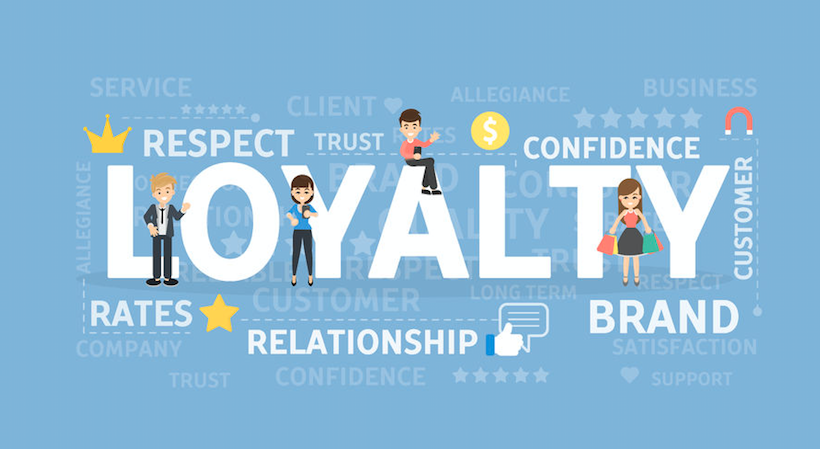Loyalty rewards programs used to be so simple. You handed customers a punch card when they made a purchase, and you marked or punched their card each time they made another purchase. Then, when a customer’s card had enough punches or marks, he or she got something for free.
Technological advances over the past two decades have made it possible for marketers to collect and use increasingly granular and personal information on customers to offer them more personalized rewards. While this sounds desirous and mutually beneficial on the surface, the reality of it is much muddier.
Marketers are not always using the data they collect effectively, research shows, and customers aren’t always excited about businesses peering into their personal lives, chronicling their private purchases in a database—among other things. As a result, the popular practice originally designed to help businesses grow has become less straightforward (and less popular) than it once was.
This is particularly problematic for startups that rely on an effective rewards program to attract and retain customers—especially when about 20 percent of startups fail within the first year and only about 50 percent survive five years, according to Bureau of Labor Statistics.
Marketers at national chains have large advertising and promotional budgets to keep customers coming through their doors, and can therefore afford to make mistakes with their loyalty programs. However, those leading marketing strategies for startups and small businesses cannot.
Loyalty programs are one of the central ways startups develop and maintain a core of loyal customers, so it is paramount to their survival that they have a loyalty program that works.
So, here is the question of the hour: Has loyalty today become too complicated?
In short, yes.
According to a recent survey by Accenture, 71 percent of people claim that modern loyalty programs do not create loyalty.
While big data and high-tech solutions do not hold the key, research from the past 20 years does.
Recent studies show customers are growing increasingly skeptical of sharing data with brands and are reluctant to try new technologies designed to enhance brand experiences because they have become increasingly wary of how brands use their data.
In a recent CrowdTwist study, only 46 percent of consumers (and 50 percent of millennial and Gen Z consumers) said they are willing to share their data in exchange for personalized experiences. This is a significant change (down nearly 50 percent) from just last year, when 98 percent of the millennial and Gen Z consumers CrowdTwist surveyed were willing to share their personal information.
Every business should benefit every customer it serves, whether directly or indirectly, and every loyalty rewards program should inspire customer loyalty. So, what truly benefits customers when it comes to loyalty rewards programs?
Related: 7 Steps to Implementing a Successful Referral Program
Personalized rewards and big data trends aside, here is what experience, statistics and customers tell us actually works.
Making loyalty programs fast and convenient to join and manage
Fast and convenient loyalty programs encourage customer participation. As a result, the best loyalty programs are fast to join and just as easy for small businesses to administer. Avoid loyalty programs that require additional technology or equipment, or special training for employees. In addition to requiring a bigger upfront investment, they slow down the process and widen the margin for user error among employees.
Keeping customer data safe and using it wisely
Data mismanagement and poorly executed personalization has left consumers skeptical of big data-driven loyalty programs. If you collect customer’s personal data, make sure you use it to provide truly outstanding, customized offers and, for the love of all things marketing, don’t leave yourself open to a data breach. Alternately, protect your brand (and consumers) by not collecting it in the first place.
Skipping the app and sticking to mobile-based platforms
Research from the past 20 years shows that customers don’t want to carry another card around or download another app. They do, however, appreciate mobile-based rewards programs.
According to the 2016 Bond Loyalty Report study of brand loyalty programs, 57 percent of consumers prefer interacting with a customer loyalty program through a mobile device, and 49 percent don’t even know if there is an app available for the rewards programs they already joined.
Sign Up: Receive the StartupNation newsletter!
Providing a clear structure with very few rules and no tricks
Customers prefer loyal rewards programs with a clear structure that is easy to understand and has very few rules. They also prefer programs that reward them frequently and don’t have expiring rewards or any other tricky qualifiers, limitations or hidden exceptions. They just want to shop at their favorite businesses, earn points and spend the rewards without needing to spend more than two seconds thinking about how any of it works—or reading the fine print somewhere to discover why it doesn’t work the way they hoped.
Against this backdrop, marketers should examine whether their loyalty rewards programs are really there to reward customers, and ensure no data is collected that doesn’t need to be—both for the sake of the customer’s safety and the brand’s long-term integrity. They may find it is time to get back to the basics and simplify things rather than complicate them.






